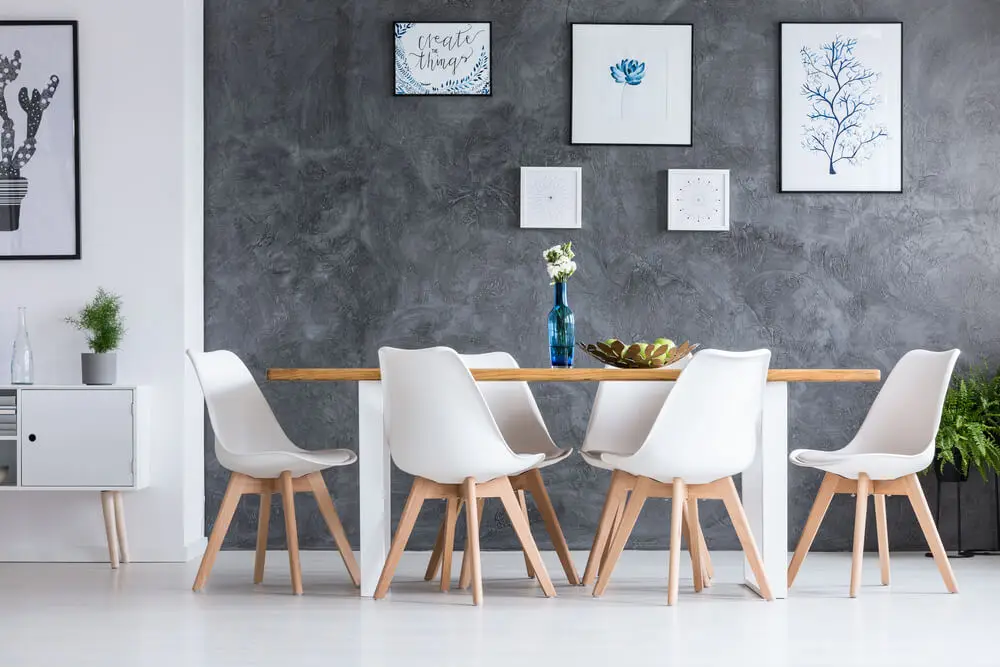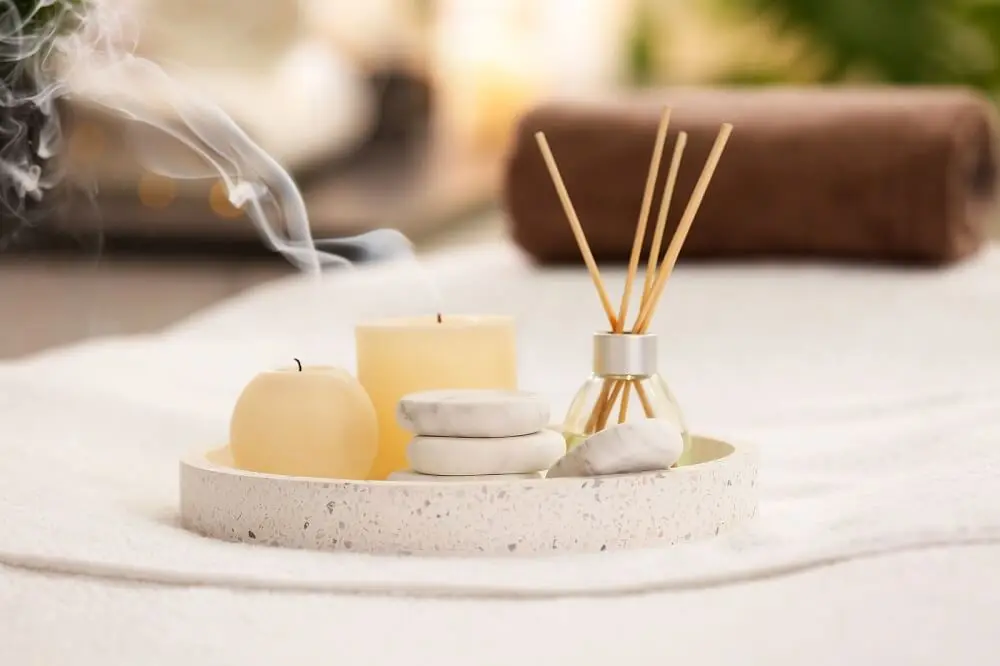The Japandi Style: How to Decorate Your Home With This Trend

The serenity provided by the Japandi style is achieved thanks to the simplicity that characterizes this type of art. It’s a trend that aims at the sobriety of the environment using simple elements.
Japandi is one of the most followed types of decoration nowadays, due to the philosophical basis on which it’s based. The premise is to bring to homes the benefits of oriental aesthetics with other cultures.
Incidentally, the atmosphere of this kind of arrangement is linked to tranquility and peace of mind. Continue reading and discover the reasons.
What is the “japandi” style?
The japandi trend results from the fusion of Japanese and Scandinavian styles. The purpose of these decorations is to offer minimalist spaces, according to the philosophy of wabi-sabi philosophy. This ideology is essential in the Japanese aesthetics, governed by good taste and beauty, as reviewed in a BBC Mundo article.
The key to this style is to turn imperfection into perfection, relying on handcrafted, functional, and natural pieces. The objects contemplated in a japandi project show clean lines and neutral colors. This type of Japanese interior design wants you to find at home the opportunity to relax in a zen space, which rescues you from daily pressures, relaxes and de-stresses.
As for the Scandinavian influence, it seeks to take advantage of the corners and the benefits of lighting. It also takes advantage of white paints, so that the rooms emphasize neatness and increase natural light.

How to adapt the decoration of your home to the “japandi” style?
The Escuela Superior de Diseño de Barcelona points out that decorating a space involves choosing furniture and accessories that add aesthetic value to the final look. It contemplates the meticulous selection of textures, colors, and shapes that combine with each other.
According to these premises, the japandi trend revolves around 3 keys:
- Originality: it’s the personality that receives the style and depends on who executes it.
- Simplicity: minimalism is the forte of Japandi art. According to the University of the Orient, the foundation of the minimalist trend is to reduce to the essential and get rid of what is not useful.
- Neutrality: the discretion of Scandinavian colors is paired with the explosion of strong Japanese pigments. The bases or backgrounds are usually neutral, while earthy palettes add a striking touch.
The Japandi style is detached from saturation and sticks to refined components. Adapt it to your home with the following recommendations.
Include handcrafts in your decor
Japandi prefers non-industrial items to increase the homey feel. In addition, handmade objects have a raw finish that is soothing to the touch. Here are some suggestions for living rooms, bedrooms and other rooms:
- Mirrors
- Sculptures
- Natural fiber chairs
- Light wood furniture
- Bamboo or stone pieces
- Simply framed paintings
- Ceramic vases and ornaments
- Cushions made with linen textiles
We think you may also enjoy reading this article: 10 Oriental Decorating Tips that You Can Apply in Your Home
Play with spaciousness
In the japandi trend, it’s necessary that spaces show fluidity. Remove objects that get in the way, disturb the view, and unbalance the energies surrounding the house. This is the way in which such decoration is linked to the philosophy of feng shui.
The delimitation of areas must be clear and it’s a good idea to combine the size of the furniture, in order that they don’t overtake the area destined to them. So that there is not a complete divorce between the elements that make up the rooms, install paper screens, sliding wooden doors or slatted dividers.
Introduce indoor plants
Incorporating plants inside the house is favorable for inspiration and relaxation. Complying with the precepts of oriental and Scandinavian decoration, the pots you use must be simple and light-colored. Leave the green to the leaves and discard the flowers of multiple colors.
As for plants, japandi emphasize the ficus, the birds of paradise, and vines. It’s important that they are few specimens; one is enough.

Like this article? You may also like to read: Feng Shui Ball: What Is It and How Can You Integrate It Into Your Decor?
Contrast colors
Beige, pastel green, gray, or white colors predominate on the walls, but it’s possible to contrast with the rest of the decoration. In the kitchen island, you could add a little dark wood. In the living room, it’s not unreasonable to use soft blue, olive green or brown furniture cushions.
Use natural fibers
Fabrics in sand tones are perfect for bedding or blankets that adorn the furniture. Jute and wicker are ideal choices for tablecloths, baskets, and flower pots.
Clean and scent
Both cleanliness and fragrances are part of the ambiance. Both complement the fresh and relaxing atmosphere that is breathed in a japandi room. It’s a good idea to use cleaners whose perfume is made of natural extracts, such as lavender, cinnamon, pine, and jasmine.

The relationship between the “japandi” style and emotions
The japandi decoration is linked to emotional decoration. It means that it’s focused on transmitting positive energies through the distribution and arrangement of spaces, so that the person gets more comfort and security where they live.
The advantages of this type of art transcend the aesthetic. They address the welfare of the mind, as proposed by the Japanese trend.
All cited sources were thoroughly reviewed by our team to ensure their quality, reliability, currency, and validity. The bibliography of this article was considered reliable and of academic or scientific accuracy.
- Crossley-Baxter L. ¿Qué es wabi-sabi, la particular manera japonesa del ver el mundo y de entender la imperfección como belleza. BBC News Mundo. https://www.bbc.com/mundo/vert-tra-46259069#:~:text=Wabi%2Dsabi%20es%20una%20parte,indefinible%20en%20la%20cultura%20japonesa.
- González E. ¿Cuál es la diferencia entre diseño de interiores y decoración? Escuela Superior de Diseño de Barcelona. España; 2018. https://www.esdesignbarcelona.com/actualidad/diseno-espacios/cual-es-la-diferencia-entre-diseno-de-interiores-y-decoracion
- Martínez Refugio CA. El minimalismo como estilo de vida. Universidad de Oriente. México. https://veracruz.uo.edu.mx/blog/el-minimalismo-como-estilo-de-vida
This text is provided for informational purposes only and does not replace consultation with a professional. If in doubt, consult your specialist.








